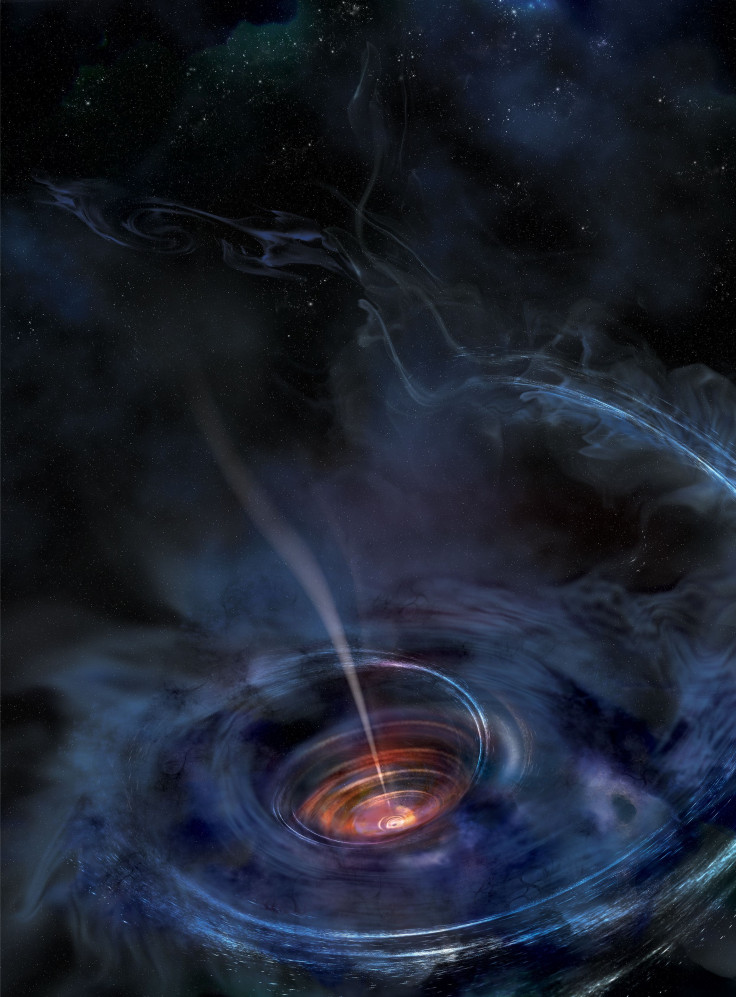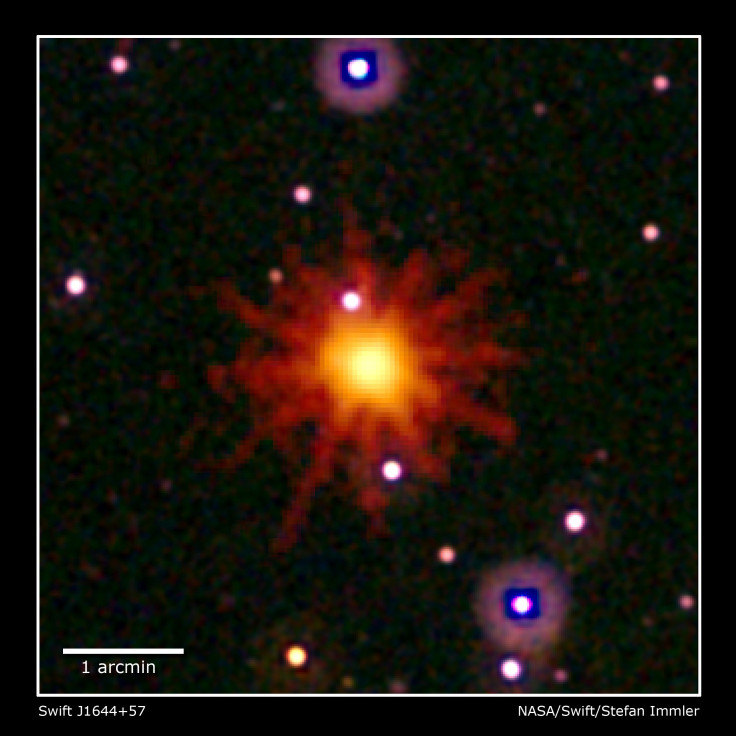Dormant Black Hole Wakes Up To Chow Down A Star, Emits High-Energy X-Ray Flares

There are two kinds of black holes in our universe — active black holes, which are voraciously feeding on gas and stellar debris and thus have an accretion disk surrounding them, and dormant black holes, which are not actively consuming matter. Although active black holes usually hog the limelight, primarily because they are much easier to detect, they make up only 10 percent of all the black holes in the cosmos.
Occasionally, a dormant black hole can awaken from its slumber, gobbling up a wayward star that wanders too close and gets trapped in its gravitational well. This triggers what is known as a “tidal disruption event.” For reasons we still do not understand, most tidal disruption events do not emit X-rays, making the hunt for events that do a key area of research.
In a study published Wednesday in the journal Nature, scientists describe one such event — one of the only three observed to date that have high-energy X-ray emissions associated with them. The black hole that produced these X-ray flares nearly 3.9 billion years ago was first detected in 2011 and has now been named Swift J1644+57.

“This is the first and only such event that has been caught at its peak,” lead author Erin Kara, a postdoctoral researcher at NASA’s Goddard Space Flight Center in Greenbelt, Maryland, and the University of Maryland, College Park, said in a statement. “NASA’s Swift satellite saw it first and triggered the European Space Agency’s XMM-Newton satellite and the Japanese Aerospace Exploration Agency and NASA’s Suzaku satellite to target it for follow-up. So we have excellent data. We’re lucky that the one event we have is showing us all these exciting new things.”
Although 90 percent of all the black holes in the universe are currently believed to be dormant, it wasn’t always the case. These structures, which are still little understood, are believed to have played a crucial role in the formation of the first galaxies and star clusters. As a result, studying dormant black holes is key, not only to understand the overall nature of black holes, including their feeding patterns, but also to understand how galaxies form.
“The meaning of this extends far beyond the studies of tidal disruption events,” co-author Lixin Dai, a postdoctoral associate in physics at the University of Maryland, College Park, said in the statement. “It can help us understand how the biggest black holes in the universe formed and co-evolved with their host galaxies.”
© Copyright IBTimes 2024. All rights reserved.





















